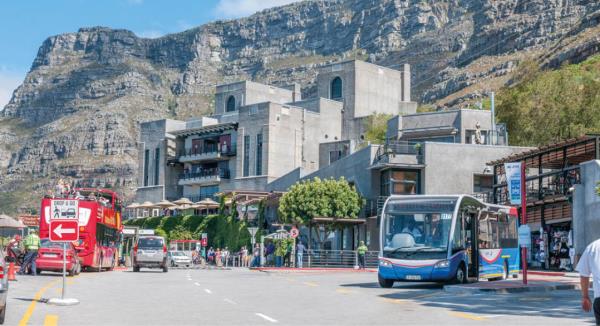11 February 2025

The MyCiTi Integrated Rapid Transit (IRT) Service of the City of Cape Town has been under development since 2010 as a rapid bus service targeting many regions of the Cape Metropole. Tens of thousands of customers utilise the system each day, taking advantage of the cashless smart card payment system myconnect.
The service aims to provide quicker transport to Cape Town’s citizens on main routes like the airport link or the table view trunk route. Fast articulated buses provide priority transport offering facilities such as electronic contactless ticketing for quicker boarding times, traffic light pre-emption at main junctions, and real-time passenger information in vehicles, at stops and via the internet.
Advanced public transport management
Today, the MyCiTi system involves a total of up to 350 vehicles on two trunk routes with stations, and currently five feeder routes. However, the number of routes and stops will continuously increase to five trunk routes, 24 feeder and area routes and a several hundred bus stops. The infrastructure for these additional stages is currently under construction.
The MyCiTi project continues to advance both physically and technologically speaking. To provide even faster and more encompassing services to Cape Town’s many residents and visitors, Trapeze set up an Advanced Public Transport Management System (APTMS). The system also integrates thin film transistor (TFT) passenger information signs at bus stations; and terminals and improves passenger safety by virtue of video monitoring and emergency (panic) buttons in the buses.
“Data supply is supported via LIO-Data, while the transfer of video data from CCTV cameras and uploading software and data into vehicles occurs via Wi-Fi.”
Functionalities of the project include a LiDAR Inertial Odometry (LIO) automatic vehicle location and fleet management system; IBISplus on-board computers; GPS-based location; voice and data communication via GSM/GPRS. For passenger information, a Web Display Feed featuring real-time communication with signs at the bus stops was installed, and real-time passenger information for all bus stops via internet enquiry were enabled. Data supply is supported via LIO-Data, while the transfer of video data from CCTV cameras and uploading software and data into vehicles occurs via Wi-Fi.
Effective automatic vehicle control
The project has seen wide improvements implemented across the MyCiTi system.
Now, the control centre features five dispatcher workplaces with VoIP voice communication in the Cape Town Traffic Management Centre (TMC); a 16-screen video wall; GIS-map for bus monitoring; data supply via LIO-Data; Depot Data Management (DDM); and Business Intelligence (BI) reporting workplaces. The new radio system relies on GPRS data and GSM voice communication services.
Three bus depots and one staging area have benefited from DDM front end and Wi-Fi infrastructure, while 200 TFT stop signs with Trapeze Web Display Feed providing real-time passenger information and onboard video transmission. Software interfaces include a planning and scheduling program for route and timetables; the Trapeze SOAP route path interface for ticket validation and distance-based fare and ticketing; support for the on-board CCTV system; and a mobile phone timetable enquiry system.
The results? Effective automatic vehicle location and control; real-time passenger information; video monitoring, and emergency buttons, according to Trapeze.







